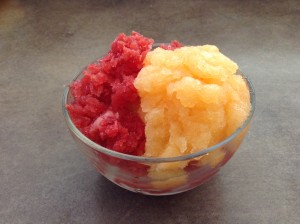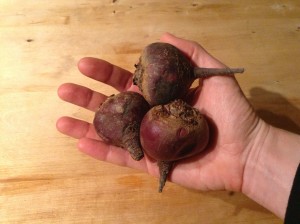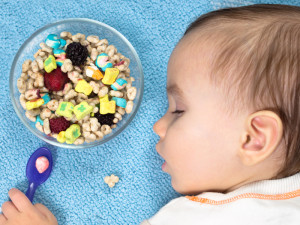Banana Ice Cream (Dairy and Sugar Free)
/I wish that I had discovered this recipe earlier in my life. It’s creamy, smooth and delicious – just like ice cream! Banana ice cream.
While it’s vegan and sugar-free, the best thing about this recipe (besides the taste) is that it only includes 1 or 2 ingredients. How great is that!
The secret is very ripe bananas. Buy them when you see them in the store. Slice and freeze them. Then you’re ready to make ice cream anytime you wish.
Blending the bananas does take a little while. At first they will break into a chunky slurry and you will likely think that this “ice cream” idea doesn’t work. Be patient. Next it will form one big ball. Then, suddenly, it will become a beautiful, smooth, whipped texture – just like ice cream. If you haven’t added any strongly coloured flavourings, the colour of your bananas will also suddenly lighten considerably to a creamy off-white. That’s what you’re looking for – your “ice cream” is ready!
There are likely hundreds of flavor combinations. I’m sharing the plain version (so you know the base recipe) along with 3 flavour ideas. My favourite is the cinnamon.
Banana Ice Cream Directions
- Peel and slice bananas. Freeze.
- Place frozen sliced bananas in a blender. Add flavouring ingredients. Blend until smooth.
Banana Ice Cream Ingredients
Plain
1 cup sliced bananas
Cinnamon
1 cup sliced bananas
¼ tsp cinnamon
Chocolate
1 cup sliced bananas
½ - 1 tsp cocoa
Half a teaspoon of cocoa results in a banana ice cream with just a hint of chocolate. One teaspoon gives a full chocolate flavour. Choose a level that you enjoy.
Strawberry
2/3 cup sliced bananas
1/3 cup strawberries
This combination works best if you partially blend the bananas first until they are just about to start creaming. Then add the strawberries. The result will be a creamy ice cream with strawberry flavour. Adding the strawberries at the same time as the bananas results in a more icy rather than creamy texture (more sorbet-like rather than ice cream-like).
Check out more healthy recipes.












 It happened again yesterday. I was leading a workshop and a parent asked me: “Is it wrong to give my child smoothies with veggies in them? Is this considered hiding veggies?” Rarely a workshop goes by without a parent asking me about smoothies for their picky eater kids. They’re such a popular trend these days. While I touched on this in last week’s blog post; it’s such a common question that I get about healthy snacks for kids that I thought that it was worthwhile to expand on it today. And, share some ideas for smoothie ingredients.
It happened again yesterday. I was leading a workshop and a parent asked me: “Is it wrong to give my child smoothies with veggies in them? Is this considered hiding veggies?” Rarely a workshop goes by without a parent asking me about smoothies for their picky eater kids. They’re such a popular trend these days. While I touched on this in last week’s blog post; it’s such a common question that I get about healthy snacks for kids that I thought that it was worthwhile to expand on it today. And, share some ideas for smoothie ingredients. You’ve probably heard that it’s great to get your kids to help you in the kitchen to learn cooking skills, instill healthy eating habits, and more.
You’ve probably heard that it’s great to get your kids to help you in the kitchen to learn cooking skills, instill healthy eating habits, and more. {Guest Post at
{Guest Post at  Aah, beets. These versatile root veggies are one of my favourites! As a dietitian, part of my job is to know how to prepare healthy foods like beets. So I’m sharing a couple of my favourite ways to use them. A classic storage, root veggie, you can find local ones (fairly cheap) throughout the winter here in Victoria, BC.
Aah, beets. These versatile root veggies are one of my favourites! As a dietitian, part of my job is to know how to prepare healthy foods like beets. So I’m sharing a couple of my favourite ways to use them. A classic storage, root veggie, you can find local ones (fairly cheap) throughout the winter here in Victoria, BC. Hallowe’en is a fun and exciting holiday for kids. And, while as a parent you may not love the idea of all that Halloween candy, the last thing that you want to add to an already hectic day is a battle over food.
Here’s some ideas about how to handle all that Halloween candy.
Hallowe’en is a fun and exciting holiday for kids. And, while as a parent you may not love the idea of all that Halloween candy, the last thing that you want to add to an already hectic day is a battle over food.
Here’s some ideas about how to handle all that Halloween candy. Could What I’m Feeding my Toddler be Keeping them Awake?
I'm often asked by parents about what foods are best at bedtime. And, if there's anything they shouldn't feed their kids before bed. There’s a lot of old wives tales and urban myths about foods and food ingredients either helping or hindering sleep, thus keeping toddlers awake. However, there isn’t strong evidence connecting specific foods and sleep –either preventing sleep or causing kids to fall asleep (and stay asleep).
Could What I’m Feeding my Toddler be Keeping them Awake?
I'm often asked by parents about what foods are best at bedtime. And, if there's anything they shouldn't feed their kids before bed. There’s a lot of old wives tales and urban myths about foods and food ingredients either helping or hindering sleep, thus keeping toddlers awake. However, there isn’t strong evidence connecting specific foods and sleep –either preventing sleep or causing kids to fall asleep (and stay asleep).
 A big thank you to the parent who shared this question: "How much is enough food for my baby? Tonight I thought I would give in and see how it went. He polished off…….
While she was specifically talking about how much food to provide at bedtime snack, I’m asked this question a lot, in fact I’m asked it at almost every workshop.
A big thank you to the parent who shared this question: "How much is enough food for my baby? Tonight I thought I would give in and see how it went. He polished off…….
While she was specifically talking about how much food to provide at bedtime snack, I’m asked this question a lot, in fact I’m asked it at almost every workshop.

